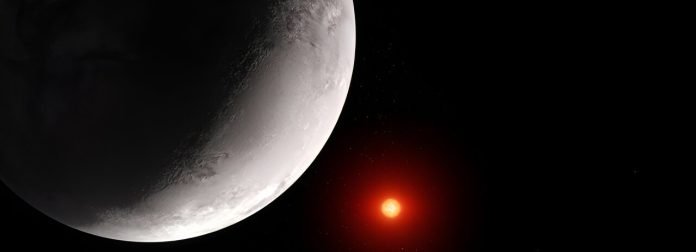
Astronomer Sebastian Zieba, who graduated with honors from Leiden University, is on an exciting mission to find atmospheres around planets outside our solar system.
Using data from the James Webb Space Telescope (JWST), Zieba studies small rocky exoplanets, hoping to find signs of life.
While he hasn’t discovered aliens yet, his research provides valuable insights for future observations.
“The ultimate goal is to find traces of life,” says Zieba, affiliated with the Max Planck Institute for Astronomy (MPIA) in Heidelberg and Leiden Observatory. “But we can’t directly detect life yet.”
Zieba’s research focuses on finding atmospheres around rocky exoplanets—planets smaller than twice the radius of Earth and made mostly of rock. Discovering atmospheres on these planets is a crucial step in determining if they could host life.
To detect a possible atmosphere, scientists measure the temperature of an exoplanet. This helps them understand the planet’s climate and how heat is distributed.
Zieba used this technique to study K2-141 b, a lava planet extremely close to its host star.
The planet always shows the same side to the star, resulting in one side being molten hot and the other side very cold. The extreme temperatures cause rock to evaporate, potentially creating a rock vapor atmosphere.
An atmosphere could redistribute heat, making the cold side slightly warmer and the hot side slightly cooler. Zieba wanted to find out if K2-141 b was “really hot or somewhat cooler than really hot.” He found signs of a rock vapor atmosphere, and new data from JWST should provide more insights into these types of exoplanets.
Venus-twin is bare rock
Zieba also studied the emission spectra of TRAPPIST-1 c, another rocky exoplanet similar to Venus.
He looked for traces of carbon dioxide (CO2) because CO2 is common and any volcanic activity on a planet would produce it. Surprisingly, he found no CO2 on TRAPPIST-1 c, suggesting it’s a bare rock planet, unlike Venus with its thick CO2-rich atmosphere.
Initially, Zieba used data from the Spitzer infrared telescope. During his Ph.D., he had the opportunity to work with data from the JWST. “I feel honored to be among the first generation of Ph.D. students to use JWST data,” he says.
Better telescopes might enable further research into exoplanet atmospheres. Zieba looks forward to working with JWST and other upcoming projects like the Extremely Large Telescope in Chile and the Habitable Worlds Observatory.
Even without detecting an atmosphere, Zieba’s research is valuable. “If you don’t find an atmosphere, it might not exist, or it could be due to noise from the star or your instrument. You always learn more for future observations,” he explains.
Each study brings scientists closer to understanding these distant worlds and the possibility of finding life beyond Earth.



